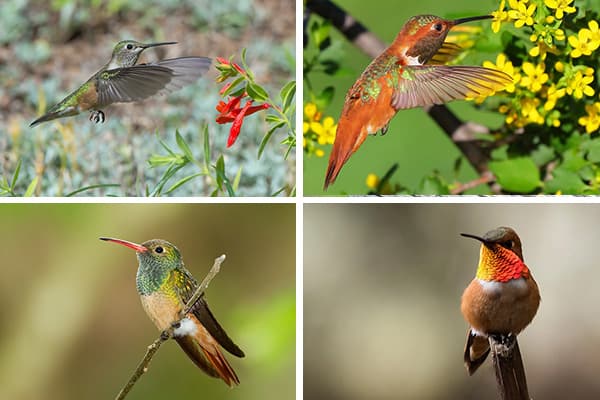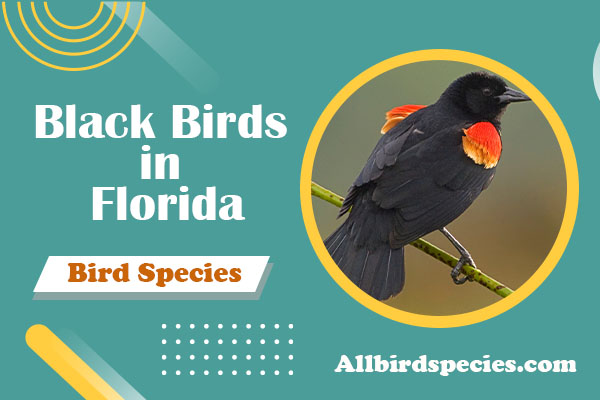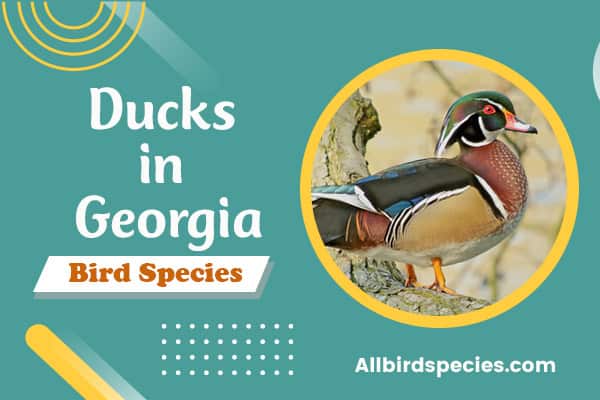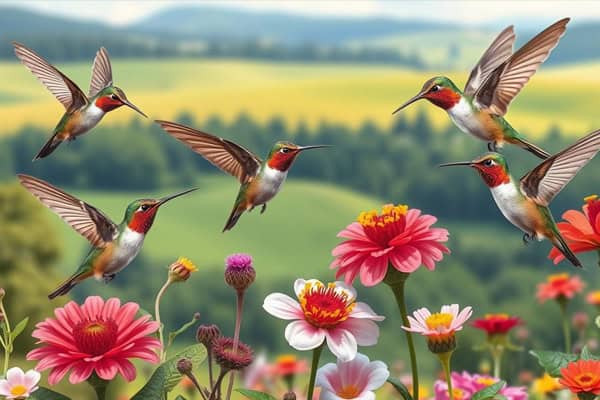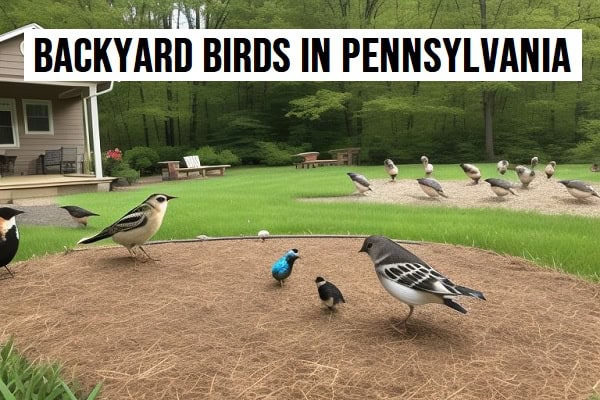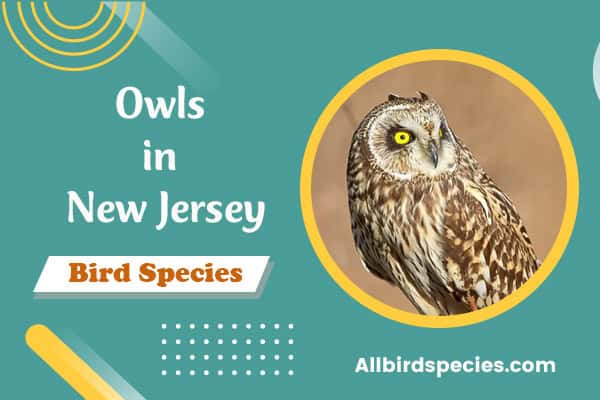8 Species of Hummingbirds in Florida (With Photos)
Did you know Florida has eight different types of hummingbirds? These birds are full of color and very agile, making them truly fascinating to watch in the wild.
In this guide, you’ll learn about their unique traits, how they behave, what they eat, and how they breed. You’ll also find out where they like to live. Knowing this makes birdwatching even better and helps you spot the different hummingbirds in Florida.
If you love birds or are just starting, this guide is perfect for you. It will help you identify and enjoy the hummingbirds in Florida. Let’s start this colorful adventure together!
Overview of Hummingbird Species in Florida
Florida is home to a wide variety of hummingbirds, showing off its amazing diversity. There are eight main types of hummingbirds in Florida, each with its own special features. A species overview helps us see how these birds are different and alike.
The Ruby-throated Hummingbird is very well-known. It loves gardens and feeders. The Rufous Hummingbird stands out with its rufous color. Other important types include the Black-chinned and Allen’s hummingbirds.
Learning about these species opens up more to explore. Seeing how they act and where they live helps us love Florida’s nature even more.
1. Ruby-throated hummingbird
- Scientific Name: Archilochus colubris
- Size: 7.5–9 cm (3–3.5 in)
- Weight: 2.0–4.5 g (0.07–0.16 oz)
- Lifespan: Up to 9 years
- Diet: Nectar, insects, spiders
The Ruby-Throated Hummingbird is a stunning bird known for its bright colors and interesting ways. They are easy to spot because of their different looks for males and females. Learning about their looks, actions, food, and homes helps us love them more.
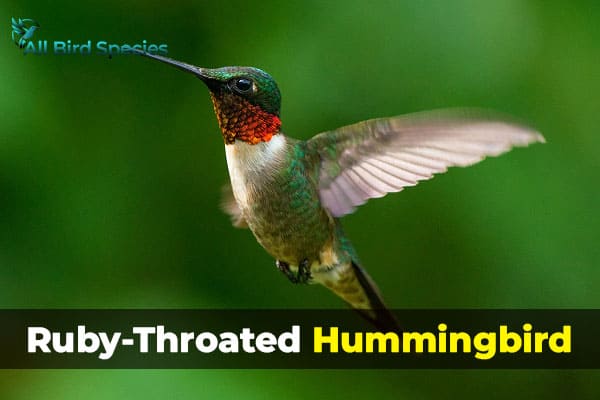
Physical Characteristics
Male Ruby-Throated Hummingbirds have a bright green top and a shiny red throat. Females have a green back and white belly. This makes them special to watch, especially when they’re looking for a mate.
Behavior and Migration Patterns
This bird is very bold, especially when they’re looking for a partner. Males show off to attract females. Every year, they fly a long way to Central America for the cold months.
Diet and Feeding Habits
Ruby-throated hummingbirds mostly eat nectar from flowers. This gives them the energy they need. They also eat small bugs and spiders for extra nutrients. You can find them in gardens and parks, looking for food.
Habitat Preferences
These birds like many places, like open woods, gardens, and parks. They love areas with lots of flowers because flowers give them food and help them make babies. You can see them looking for nectar in these places, especially warm ones.
2. Rufous Hummingbird
- Scientific Name: Selasphorus rufus
- Size: 7.5–9 cm (3–3.5 in)
- Weight: 2.0–4.0 g (0.07–0.14 oz)
- Lifespan: Up to 9 years
- Diet: Nectar, insects, spiders
The Rufous Hummingbird is a fascinating bird. It has striking features and impressive migration patterns. Knowing how to spot this bird and its nesting habits makes birdwatching more fun. You might see it during migration seasons.

Physical Features and Identification
Spotting the Rufous Hummingbird is exciting. Males have a bright rusty-orange throat that stands out. Their brownish faces help tell them apart from others. Females are harder to spot because they have a more subtle color.
Size and shape are important for identifying this bird. These details help tell if it’s a Rufous Hummingbird.
Migratory Behavior and Range
This bird migrates up to 4,000 miles each year. It’s mostly found in the western United States, but you can also see it in Florida during migration.
Knowing their migration paths helps you understand their seasonal behaviors. It also shows where they are in the state.
Nesting and Breeding Habits
Rufous Hummingbirds build nests low in trees or shrubs. Only females build the nests. They choose spots that are safe and have food nearby.
This shows how they breed and live. It helps us understand their whole life cycle.
3. Black-Chinned Hummingbird
- Scientific Name: Archilochus alexandri
- Size: 7.5–9 cm (3–3.5 in)
- Weight: 2.5–4.0 g (0.09–0.14 oz)
- Lifespan: Up to 5 years
- Diet: Nectar, insects
The Black-Chinned Hummingbird is a fascinating bird found in the western United States. Its striking look and interesting behaviors make it easy to spot among other hummingbirds.
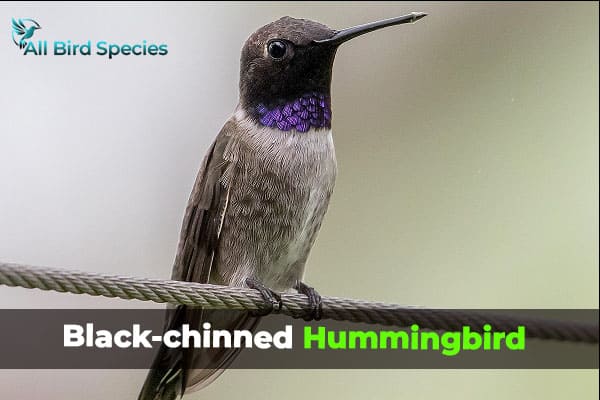
Distinguishing Features
The Black-Chinned Hummingbird has a black throat with white edges. This looks great against their green back and belly. Adult males have bright colors and long tails, making them stand out. Females are less colorful but still have the black throat markings.
Behavioral Traits and Migration
This bird is very aggressive when defending its food. It chases other birds away to keep its territory. They migrate to Mexico when it gets cold, showing off their flying skills.
Feeding Practices
Black-Chinned Hummingbirds eat nectar from flowers. Their long tongues help them get nectar easily. They visit gardens with flowers, showing off their colors. Planting the right flowers can attract these birds to your garden.
4. Allen’s Hummingbird
- Scientific Name: Selasphorus sasin
- Size: 7.5–9 cm (3–3.5 in)
- Weight: 2.5–4.0 g (0.09–0.14 oz)
- Lifespan: Up to 5 years
- Diet: Nectar, insects
The Allen’s Hummingbird is a stunning bird known for its bright colors and special traits. Seeing this bird can be very exciting, especially for those who love birds. Here, you’ll learn how to spot it and when it moves.
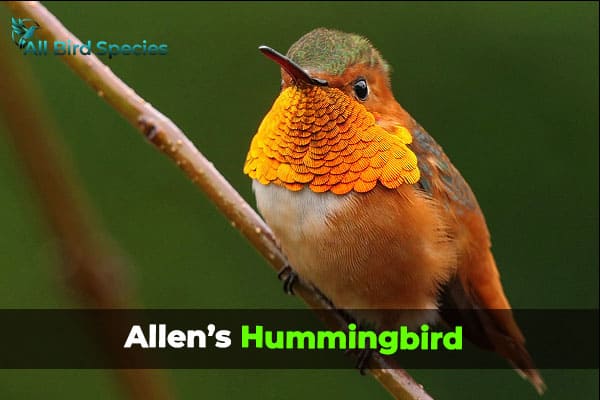
Identifying Characteristics
The male Allen’s Hummingbird is easy to spot because of its bright green and orange feathers. It’s small, about 3 to 4 inches long. It has a long, thin bill and a forked tail.
The female has duller colors to blend in better.
Migration Trends and Patterns
Allen’s Hummingbirds mostly travel along the Pacific coast. Some go as far as Florida. They move between late summer and early fall and come back in spring.
This helps bird watchers know when and where to find this beautiful bird.
| Characteristic | Description |
|---|---|
| Size | 3 to 4 inches |
| Male Plumage | Iridescent green and orange |
| Female Plumage | Muted colors for camouflage |
| Migration Range | Primarily along the Pacific coast, with occasional sightings in Florida |
| Migration Timing | Late summer to early fall, returning in spring |
5. Broad-Tailed Hummingbird
- Scientific Name: Selasphorus platycercus
- Size: 8–10 cm (3.1–3.9 in)
- Weight: 3.5–4.5 g (0.12–0.16 oz)
- Lifespan: Up to 10 years
- Diet: Nectar, insects
The Broad-Tailed Hummingbird is known for its vibrant traits. It lives in the western United States’ high places, but it sometimes shows up in Florida, exciting birdwatchers. Knowing how to spot this hummingbird makes its beauty even more special.
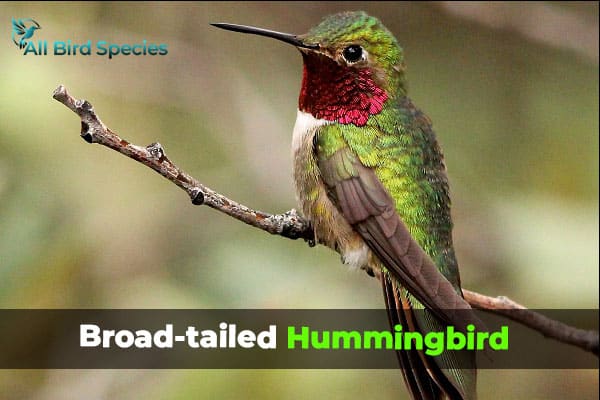
Identification and Appearance
Look for the Broad-Tailed Hummingbird’s bright green feathers and wide, shiny tail. Males have a shimmering rose-red throat. This makes them stand out. Females are less bright but still easy to spot.
Their wings make a unique whirring sound. This sound makes them even more noticeable.
When spotting the Broad-Tailed Hummingbird, watch for how it acts. It loves nectar from tubular flowers. It also likes flowers that grow in clusters.
This bird prefers high places. This helps you know where to look for it.
| Physical Traits | Male Features | Female Features |
|---|---|---|
| Feather Color | Vibrant emerald green with a rose-red throat | Greenish-brown with less vibrant scaling |
| Tail | Broad, iridescent tail feathers | Similar but less pronounced |
| Size | Approximately 3.5 inches long | Similar size |
When identifying the Broad-Tailed Hummingbird, remember its habitat and behavior. These traits show its unique place in the ecosystem. Keep an eye out for this beautiful bird on your next outdoor trip!
6. Calliope Hummingbird
- Scientific Name: Selasphorus calliope
- Size: 7.5–9 cm (3–3.5 in)
- Weight: 2.0–4.0 g (0.07–0.14 oz)
- Lifespan: Up to 5 years
- Diet: Nectar, insects
The Calliope Hummingbird is one of the smallest in North America. Its bright colors catch the eye. This bird loves the West but can also be seen in Florida.

Unique Traits and Size
This tiny bird is about 3 to 3.5 inches long. Males have bright throats that change color in the light. Their size and colors make them stand out.
Feeding Preferences
This bird eats a lot of nectar from flowers. It also eats insects for protein. Watching them eat is a special sight.
| Feature | Details |
|---|---|
| Size | 3 to 3.5 inches in length |
| Gorget Color | Vibrant, shifting colors |
| Typical Diet | Nectar and insects |
| Habitat Preferences | Forested areas, gardens with flowering plants |
7. Anna’s Hummingbird
- Scientific Name: Calypte anna
- Size: 9–10 cm (3.5–3.9 in)
- Weight: 3.6–4.6 g (0.13–0.16 oz)
- Lifespan: Up to 10 years
- Diet: Nectar, insects, spiders
Anna’s Hummingbird is a fascinating bird with striking physical traits and unique behavior. Males stand out with their iridescent green and pink feathers.

Physical Description
Adult males have a sparkling emerald back and a rosy crown. Females are greenish-brown with a lighter underside, which helps birdwatchers distinguish males from females.
Behavior and Mating
The behavior of Anna’s Hummingbird is impressive. Males do high-speed aerial tricks to attract females. These tricks show their agility and endurance.
Anna’s Hummingbird is common in the West but also Florida. This means you might see them in your backyard.
| Physical Trait | Male | Female |
|---|---|---|
| Plumage Color | Iridescent green and pink | Greenish-brown |
| Body Length | 3.9 – 4.3 inches | 3.5 – 4.1 inches |
| Weight | 3.5 – 4.5 grams | 3.0 – 4.0 grams |
| Flight Pattern | Acrobatic and fast | Graceful and agile |
Hummingbirds in Florida: Best Spotting Locations
Florida is full of great places to see hummingbirds. You can find them in beautiful gardens and peaceful nature reserves. These spots are perfect for birdwatching in Florida.
The Florida Keys are home to many hummingbirds because of the tropical plants. The Everglades National Park is also great, with its many different environments. Other top places include:
- Miami Beach Botanical Garden
- Johannes B. Davy Park in Naples
- Orlando Wetlands Park
- Fort De Soto Park in St. Petersburg
For the best hummingbird watching, go early in the morning or late in the afternoon. Bring binoculars and a camera to see their beauty up close.
Seasonal Patterns and Migration Timing
Learning about hummingbirds’ seasonal patterns improves birdwatching in Florida. These birds migrate each year, following the seasons. They come and go with the weather changes.
Ruby-throated Hummingbirds arrive in Florida in February, starting the spring migration. They look for flowers and nectar after their long trip. Rufous Hummingbirds appear in late summer and early autumn for the fall migration.
The table below shows when different hummingbird species migrate in Florida:
| Hummingbird Species | Arrival in Florida | Peak Migration Month | Departure |
|---|---|---|---|
| Ruby-throated Hummingbird | February | March | October |
| Rufous Hummingbird | August | September | April |
| Black-Chinned Hummingbird | Variable | May | November |
| Anna’s Hummingbird | Year-round | N/A | N/A |
Knowing when hummingbirds migrate helps you see them better. Plan your birdwatching trips during these times. It will make your experience in Florida even more special.
Feeding Hummingbirds in Your Backyard
Attracting hummingbirds to your backyard brings joy. Setting up feeders and making nectar recipes are important. This way, you can watch these colorful birds up close.
Setting Up Hummingbird Feeders
To attract hummingbirds, place feeders where they can see them. Brightly colored feeders work best. Here are some tips for setting up feeders:
- Choose a location with shade to prevent nectar from spoiling quickly.
- Mount feeders at eye level for easy observation.
- Keep feeders clean to protect the health of your feathered friends.
- Use multiple feeders to accommodate several hummingbirds at once.
Choosing the Right Nectar Recipes
Nectar recipes are easy to make and give hummingbirds the energy they need. Mix four parts water with one part sugar. Boil it, then let it cool before filling your feeder. Don’t use dyes, as they can harm the birds. Here’s a quick recipe guide:
| Ingredients | Instructions |
|---|---|
| 1 cup of water | Boil water to sterilize it. |
| 1/4 cup of granulated sugar | Add sugar to the boiled water and stir until dissolved. |
| Cool the mixture | Let the nectar cool before filling the feeder. |
| Store leftover nectar | Refrigerate any extra nectar for up to a week. |
Conservation of Hummingbird Habitats
Hummingbird conservation depends on keeping their habitats safe. It’s important to protect these places for hummingbirds to live. You can help by supporting local and national efforts to save habitats.
Groups working to save wildlife help hummingbirds by fixing their homes. They do things like:
- Planting native plants for food.
- Creating safe areas away from harm.
- Teaching farmers to grow food without hurting habitats.
You can help hummingbirds by making your garden a green space. Working together with your neighbors makes a bigger difference. Here’s what you can do:
- Grow plants that attract hummingbirds.
- Join clean-up events to keep the air and water clean.
- Learn and teach others about why we need to save hummingbird homes.
Doing these things can really help the birds and their homes.
Threats to Hummingbird Populations
Hummingbirds are very resilient birds. But they face big challenges. Climate change and habitat loss are two major threats.
Impact of Climate Change
Climate change is a big problem for hummingbirds. It messes up their migration patterns. This means they might not find food when they need it.
As the weather gets warmer, their homes may not be as good as they used to be. This forces them to change fast or face big problems.
Effects of Habitat Loss
Habitat loss is a big threat to hummingbirds. Cities and farms are taking over their homes. This means less food and places to nest.
This not only cuts down on resources. It also breaks up their groups. This makes it tough for hummingbirds to do well.
| Threat | Description | Impact |
|---|---|---|
| Climate Change | Alters migration patterns and blooming seasons | Mismatched nectar availability |
| Habitat Loss | Urban and agricultural expansion destroying natural habitats | Reduced nesting sites and food sources |
Read More🐦Related Articles:
- Birds That Lay Blue Eggs
- Birds With Orange Heads
- White Birds in Florida with Long Beaks
- Orange Butterfly Meaning
- Finches in Michigan
- Finches In Hawaii
Final Word
Florida hummingbirds are not just beautiful; they are vital to our ecosystems. By appreciating them, we see their beauty and importance. Learning about the different species and their behaviors helps us understand nature better.
It is important to help these birds thrive in your backyard. By watching them responsibly and protecting their homes, we ensure they will be around for others to see. When you watch hummingbirds, think about how you can help them thrive.
Every little bit helps to protect our environment. By supporting hummingbird habitats, we keep nature balanced, making Florida a great place for these amazing birds to live.

